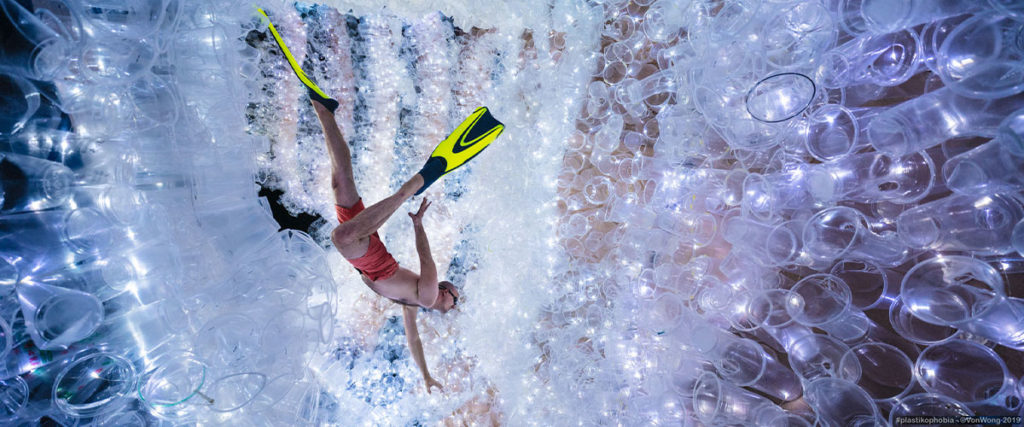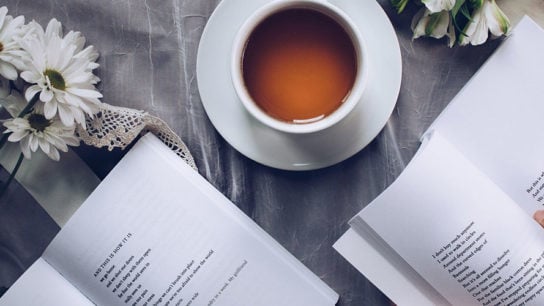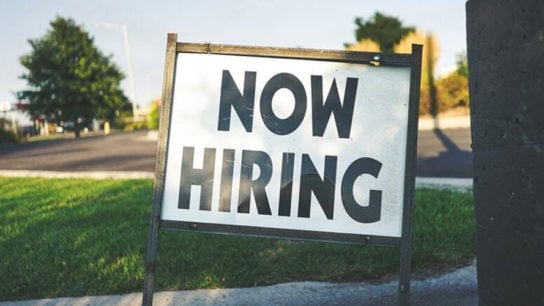Ever wondered how many straws it might take to cause a Strawpocalypse, or how many plastic cups it takes to develop Plastikophobia? Artist Benjamin Von Wong wants to show you.
Canadian artist Benjamin Von Wong creates artworks designed to wake the world up to the reality of plastic pollution – think cosmic caves constructed with thousands of cups and huge seas made of straws. With 315,000 followers on Facebook, his most viewed video ‘Mermaid on 10,000 Plastic Bottles’ has over 30 million clicks and counting. Having recently completed two projects in Asia – ‘Strawpocalypse: The Parting of the Plastic Sea’ in Vietnam and the hauntingly beautiful ‘Plastikophobia’ in Singapore, he desperately wants to help people feel the weight of our waste, saying, “I’m trying to create work that will hopefully be compelling enough to convert people who probably wouldn’t have paid attention to something otherwise.” He talks Hive Life through his own moment of discovery and his mission to help others find theirs.
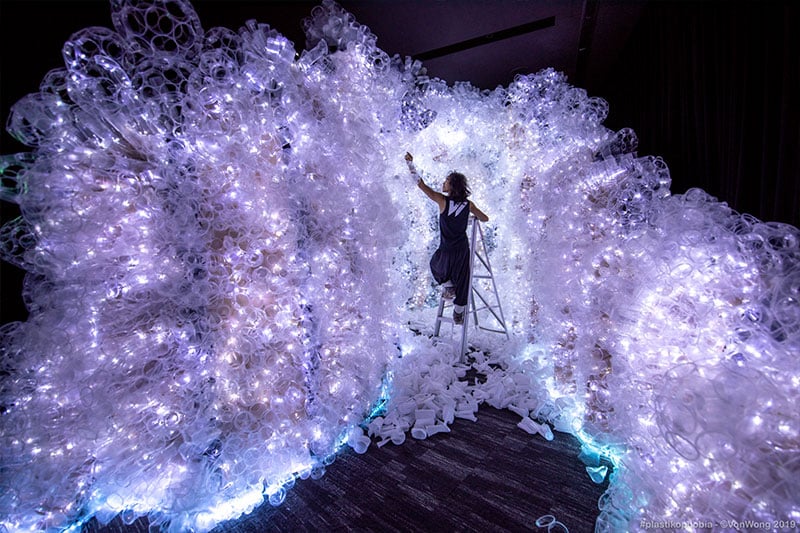
“In 2012, I’d finally achieved my dream of earning money as a creative and was on track to becoming a commercial photographer, but it just didn’t feel as gratifying as I thought it would be,” says Benjamin. “I knew I wanted to do something meaningful. So in 2016, I made the commitment to do social impact projects. I’ve never been into sustainability, but my girlfriend had the idea of going storm chasing. Everyone knows climate change is a thing, but I didn’t really know much about it, so I watched a bunch of documentaries and started paying more attention. It’s one of those things that become a bigger and bigger issue the more you notice it.”

And once he had noticed the enormity of the issues, he couldn’t unsee what had been brought to his attention. Now, Benjamin builds art installations to help others to see what’s at stake, too. Strawpocalypse was designed to represent the plastic straw pollution in Vietnam. A stunning model of two parted sea waves, it stands at 3.3 metres high and 11 metres wide, made up of 168,000 plastic drinking straws – a small number compared to the 2,000 tons of straws that flow into the ocean annually. “What I’ve always tried to do is create something really large and overwhelming, so people can feel the scale of the problem we’re facing,” says Benjamin. “I think that people will potentially feel one of two things. They will either feel empowered to do something about it or, at the very least, realise their own actions add up over time, especially with small items like straws and cups.”
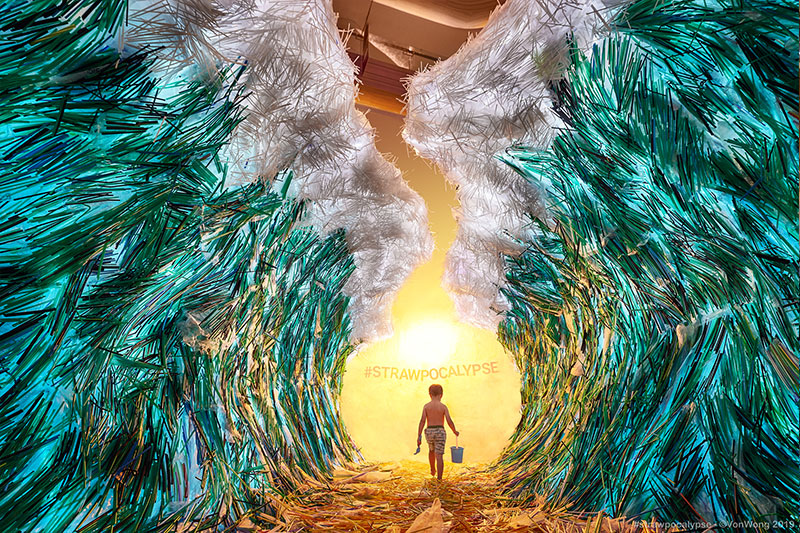
The piece, which broke the Guinness World Records as the world’s largest straw installation, was spearheaded by Zero Waste Saigon founder Julia Mesner. She reached out to Benjamin in May 2018 and asked for help building awareness. “Since Vietnam is a very polluted country, it is important to show people the reality of pollution,” says Julia. “Here, there is a lot of single-use waste, especially straws, so it is like a sensitisation. Art is a good way to gather everyone because it touches people worldwide.” Not only did she manage to get Von on board but Starbucks Vietnam agreed to sponsor the project as well. Within six months, the trio, together with hundreds of volunteers, had collected the 168,000 straws needed to bring the project to life.
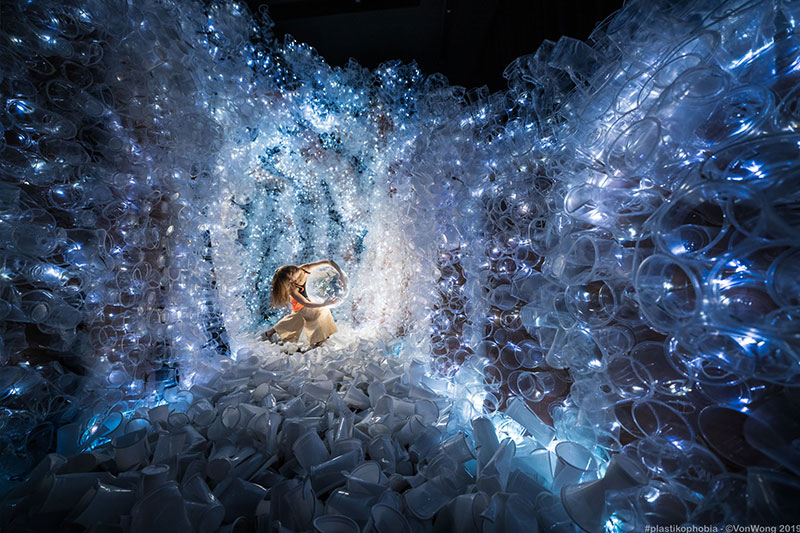
Going hand-in-hand with the detrimental straw issue are the cups they sit in. To address them, Benjamin has collaborated with fellow artist Joshua Goh and social impact strategist Laura Francois on another installation: ‘Plastikophobia.’ Currently on show in Singapore, it is a cave made up of 18,000 plastic cups collected with the help of the National Environment Agency of Singapore in just a day and a half in the city’s hawker centres. “Each and every one of my projects always has these massive community initiatives. It’s just so cool to be able to open up the creation process to anyone who believes in the cause and give them the opportunity to be part of something bigger,” says Benjamin. “I think that brings a whole new sense of responsibility and ownership to the problem and empowers people who are interested in a unique and different way.”
